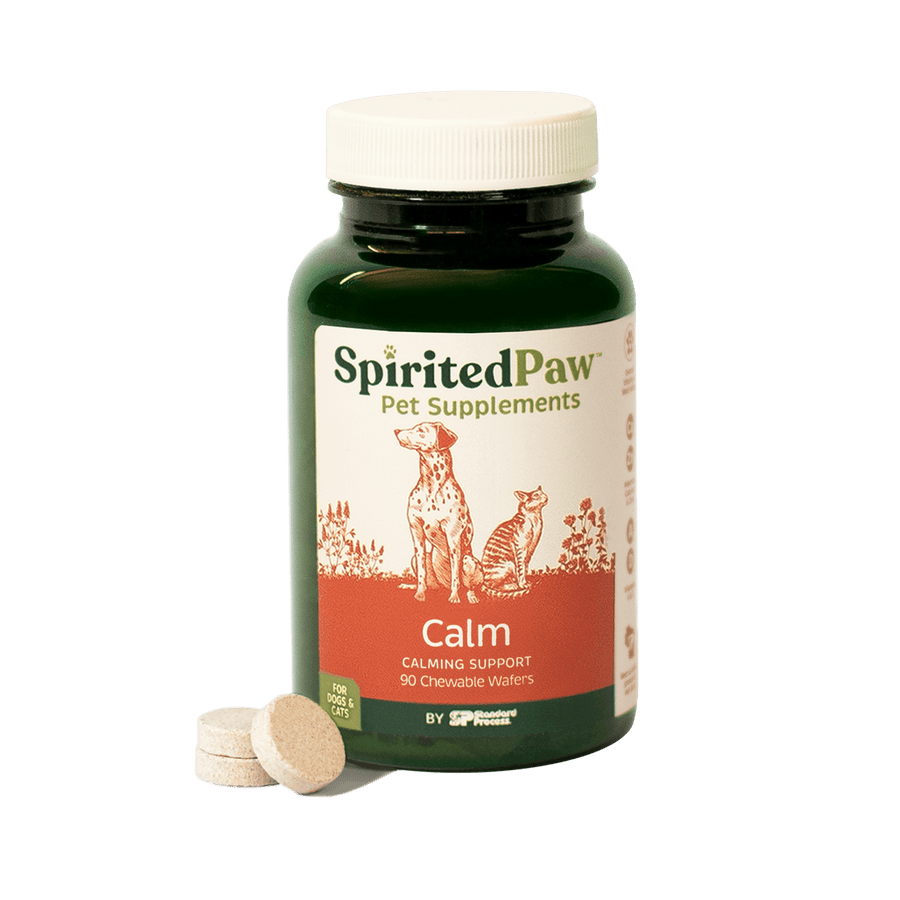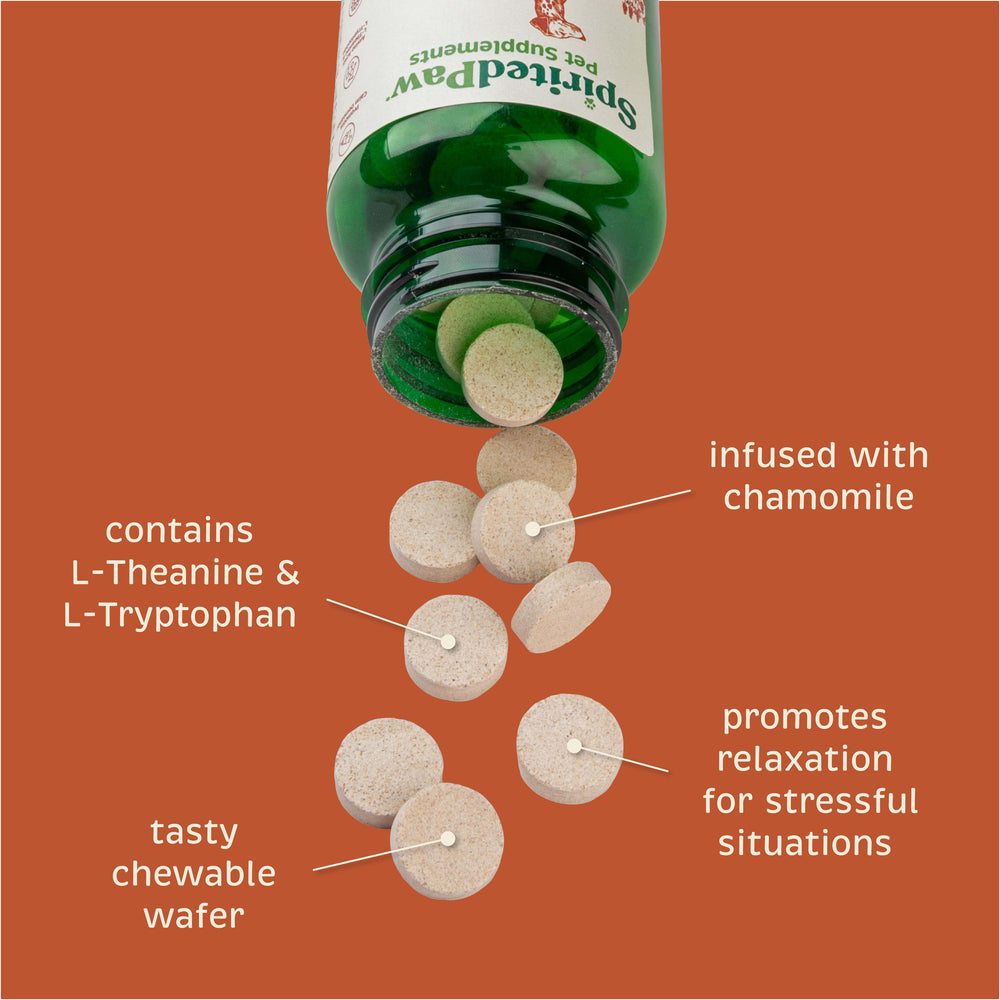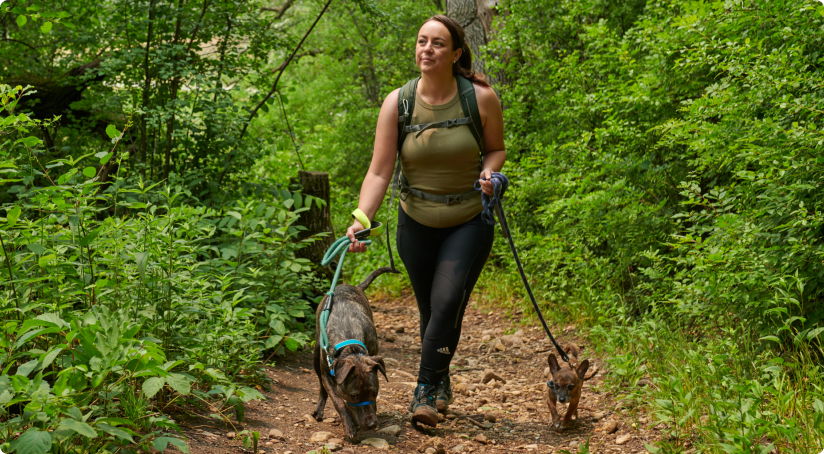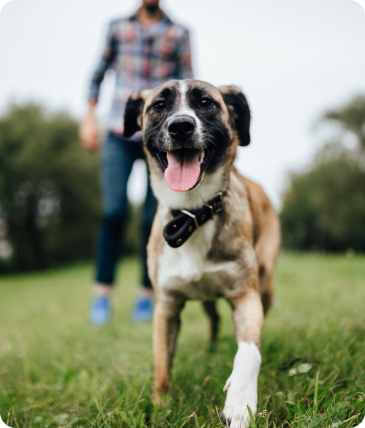Dog Anxiety Explained: Causes, Signs, and Proven Ways to Help Your Pet Cope

Anxiety is a multifaceted and deeply complex issue that affects many dogs across different stages of their lives. As pet parents, understanding the root causes, recognizing the signs, and implementing effective management strategies is crucial to ensuring our furry friends lead happy, healthy lives. In this article, we explore some of the most common causes of anxiety in dogs, how anxiety manifests, and practical ways to support our pets behaviorally. Drawing on insights from Samantha Koziol, MS in Animal Science and pet nutrition expert, this guide breaks down the causes of dog anxiety, how it manifests, and strategies for support.
Common Causes of Anxiety in Dogs
At its core, anxiety in dogs is often fear-based. Negative associations formed from past experiences can trigger anxious behaviors. For example, many dogs develop anxiety related to veterinary visits. A puppy might have an early vet experience where they are poked with needles and surrounded by unfamiliar people, creating a negative association with the office. Even routine checkups later in life can evoke anxiety, as the dog anticipates discomfort or distress based on past encounters.
Similarly, interactions with other animals can lead to anxiety. If a dog has been bitten or aggressively barked at by another dog, they might generalize that fear to all animals, reacting anxiously or defensively in future encounters. Environmental factors like thunderstorms and fireworks are also significant anxiety triggers. These loud, unpredictable noises can be frightening, especially if the dog doesn’t understand what’s happening. This fear can be compounded by a lack of early socialization when the dog was a puppy, leaving them unprepared for such stimuli later in life.
Anxiety can also stem from disruptions in routine. Dogs thrive on predictability, and sudden changes—whether in environment, schedule, or household dynamics—can unsettle them. This break from their norm often triggers anxious behaviors as they struggle to adapt to the new circumstances.
Anxiety Across Life Stages and Situations
Anxiety doesn’t just appear suddenly; it often develops from a young age. The puppy stage is critical for socialization and learning what to expect from their environment. This is the time in a dog’s life where they most readily make decisions on what is acceptable and comfortable to them versus what is triggering, so attention to detail in training and socialization is crucial to raising a well-adjusted dog. Puppies that grow up during unusual circumstances, such as the COVID-19 pandemic when owners were home constantly and had limited opportunities to teach independence, may struggle when routines change later on, such as when owners return to work. This break from constant companionship can send dogs into a spiral of anxiety, particularly separation anxiety.
Anxiety in puppies doesn’t always come from a lack of training or socialization but rather the opposite: unintentional training. Separation anxiety is often inadvertently reinforced by the way owners say goodbye and greet their pets. Overly emotional departures and arrivals can create a cycle where the dog becomes hyper-focused on the owner’s presence, leading to distress when left alone. Early exposure and positive association to new environments, people, and places- along with building comfort in a consistent daily routine- can help to avoid these issues. However, once these behaviors are established as the dog ages, they become increasingly difficult to address.
Older dogs can also develop anxiety, often linked to cognitive decline. As their brain function diminishes, they may become confused or disoriented, unable to grasp that their environment is still safe and familiar. This confusion can trigger anxiety, much like it would in humans experiencing cognitive decline.
Recognizing the Signs of Anxiety in Dogs
Understanding canine body language is essential for recognizing anxiety. Common signs include:
- Ears pinned back
- Tail tucked
- “Whale eyes” (when the whites of the eyes are visible)
- Lip licking
- Hiding or avoidance behaviors (Turning away from stimuli)
- Excessive barking or vocalizing
- Yawning
- Panting
- Pacing
Many pet owners overlook subtle signs like a dog turning away from an approaching child or person. These small cues indicate discomfort and a desire to avoid stress. Unfortunately, misunderstanding or ignoring these signs can escalate anxiety, sometimes leading to more serious behaviors such as growling or biting. Recognizing and respecting these early signals is crucial for building trust and preventing anxiety from worsening.
The Myth of the Wagging Tail
While many people associate tail wagging with happiness, this is not always the case. Tail wagging can also indicate nervousness or alertness depending on the context and the dog’s overall body language. For example, a stiff body combined with tail wagging usually signals that the dog is alert and possibly anxious, not relaxed and happy. Understanding these nuances helps pet owners respond appropriately to their dogs’ emotional states.
Environmental and Lifestyle Factors Contributing to Stress
Several environmental and lifestyle factors can exacerbate stress and anxiety in dogs. A lack of routine and training often leads to uncertainty and insecurity. Dogs benefit greatly from consistent schedules and clear expectations. When these are absent or frequently disrupted, anxiety can increase.
Constant exposure to stressors such as squirrels outside the window, visitors approaching the home, fireworks, gunshots, and thunderstorms can trigger territorial and fear responses. Interestingly, attempts by owners to comfort their pets during these episodes can unintentionally reinforce anxious behaviors. For example, coddling a dog that is pacing and panting during a storm may signal to the dog that they are justified in their overreaction. Another example, if a dog barks at squirrels and then is allowed outside to chase them, it reinforces the behavior, creating a cycle that is hard to break.
The Connection Between Diet, Gut Health, Inflammation, and Anxiety
Emerging research highlights the significant role diet and gut health play in managing anxiety. Both humans and dogs have a gut-brain axis, a communication system between the digestive tract and the brain that influences mood and behavior. What a dog eats can affect the production of neurotransmitters—chemicals that regulate nervous system function and emotional states.
Inflammation in the gut can extend to other parts of the body, including the brain, impacting cognitive function and potentially contributing to anxiety. The adrenal glands, located above the kidneys, are key players in the body’s stress response and are closely linked to inflammatory and oxidative stress pathways. Supporting these glands through nutrition can help the body respond to stress more effectively.
Foods and Nutrients That Support a Healthy Gut-Brain Axis
- Probiotics and Prebiotics: These support healthy gut bacteria, improving digestion and keeping GI inflammation in check and balanced.
- Magnesium: A crucial mineral involved in calming the nervous system and managing stress. Magnesium deficiency is linked to chronic stress cycles.
- Vitamins E and C: Antioxidants that help reduce oxidative stress and inflammation.
- L-Theanine and L-Tryptophan: Amino acids involved in producing calming neurotransmitters.
- B Vitamins: Essential for maintaining healthy cognitive function and stress response.
By incorporating these nutrients through diet or supplementation, pet owners can support their dog’s overall mental and physical health, helping to reduce anxiety symptoms.
Non-Pharmaceutical Ways to Support Dogs with Anxiety
Besides nutrition, lifestyle and environmental management are critical. One of the most effective tools is ensuring adequate energy expenditure. Dogs with pent-up energy are more prone to anxious and destructive behaviors. Regular exercise and play help tire them out physically and mentally, promoting relaxation.
Mental stimulation is equally important. Puzzle toys and food-dispensing toys challenge a dog’s brain, keeping it active and engaged. This cognitive engagement not only reduces boredom but also helps maintain optimal brain function.
Calming supplements can be a valuable addition to these strategies. Ingredients like ashwagandha, CBD, L-tryptophan, L-theanine, magnesium, and antioxidants support the body’s natural stress response and promote relaxation. These supplements are particularly helpful for dogs that struggle to wind down or become easily overstimulated.
The Role and Effectiveness of Calming Supplements
Calming supplements have shown great promise in helping dogs manage anxiety. They can relax dogs that are in a heightened state of arousal, making training and behavior modification more effective. Nutritional deficiencies might underline persistent anxious behaviors, and targeted supplementation can address these gaps.
While supplements are not a cure-all, they serve as an important tool in a comprehensive anxiety management plan. They help calm the nervous system, allowing dogs to better absorb training and environmental modifications.
How Long Do Calming Supplements Take to Work?
The time frame for seeing results varies depending on the supplement’s ingredients and potency, the individual dog’s physiology, and the severity of anxiety. Some calming supplements may take a few weeks to exhibit noticeable effects, especially in cases of with prolonged states of anxiety. However, for situational anxiety, such as fear of thunderstorms, some supplements can work within hours and be given as needed prior to expected stressful situations.
Long-Term Use of Calming Supplements
Calming supplements are not necessarily just for short-term or occasional use. Many contain essential nutrients that dogs might be deficient in, making ongoing supplementation beneficial for maintaining a calm and balanced state. Some supplements are formulated for short-term use at higher doses, so consulting with the manufacturer or a veterinarian is important to determine the best regimen for your dog. Remember, consistency is key when using nutritional support for chronic anxiety. Unlike pharmaceuticals, supplements often work more gradually and require regular administration to be efficacious. In general, understanding your dog’s specific needs and the supplement’s guidelines will help optimize results.
Integrating Supplements with Training and Environmental Changes
Supplements should be viewed as one component of a multi-faceted approach to managing anxiety. Training and environmental adjustments are equally critical. When a dog is in an overexcited or anxious state, they are less able to focus and learn. Calming supplements can reduce this overarousal, making training sessions more productive.
For example, during exposure therapy or socialization exercises, a calm dog will better absorb new experiences and form positive associations. This synergy between supplements and behavior modification techniques enhances the overall effectiveness of anxiety management efforts.
Common Mistakes Pet Parents Make When Managing Anxiety
One of the biggest challenges for pet owners is managing their own frustration. Anxiety in dogs can be persistent and frustrating, especially when it seems like nothing is working. Overreacting or showing frustration can exacerbate the situation, making the dog more anxious.
Maintaining a calm, level-headed approach is essential. Utilizing multiple tools—training, supplements, environmental changes—and seeking professional guidance when needed can help pet owners feel more empowered and less overwhelmed.
Understanding animal behavior and thought processes also reduces frustration. By learning to see the world through a dog’s eyes, owners can better anticipate and respond to their pet’s needs, creating a stronger bond and a more peaceful home environment.
When to Seek Veterinary Advice
Pet owners should consult a veterinarian as soon as they notice signs of anxiety. Even mentioning concerns during routine checkups can open doors to professional support and additional resources.
Veterinarians are experts in identifying underlying health issues that might contribute to anxiety, such as adrenal problems or nutrient deficiencies. They can also help interpret behavior and body language, providing valuable insights into what might be triggering your dog’s anxiety.
In some cases, a referral to a veterinary behaviorist may be necessary for more specialized care. Many veterinarians work closely with behaviorists and can guide pet owners through this process.
Conclusion
Managing pet anxiety requires a holistic approach that addresses the physical, emotional, and environmental needs of the dog. Understanding the causes and signs of anxiety, utilizing tailored training, providing adequate exercise and mental stimulation, and supporting overall nervous system, gut, and endocrine health with nutrition are all part of an effective strategy.
Patience, consistency, and compassion are essential for pet parents navigating this challenging issue. By building trust, respecting your dog’s signals, and seeking professional advice when needed, you can help your furry companion live a calmer, happier life.
Remember, anxiety in dogs is complex but manageable. With the right knowledge and tools, you can make a profound difference in your pet’s well-being and strengthen the bond you share.
Author: Samantha Koziol, MS; Pet Nutrition Scientist. MS in Animal Science- Companion Animal Nutrition.
Anxious Dog? Try Spirited Paw Calm, today!

Calm
A calming daily soft chew for dogs featuring natural ingredients like L-theanine and lemon balm to promote relaxation without drowsiness.




















Leave a comment